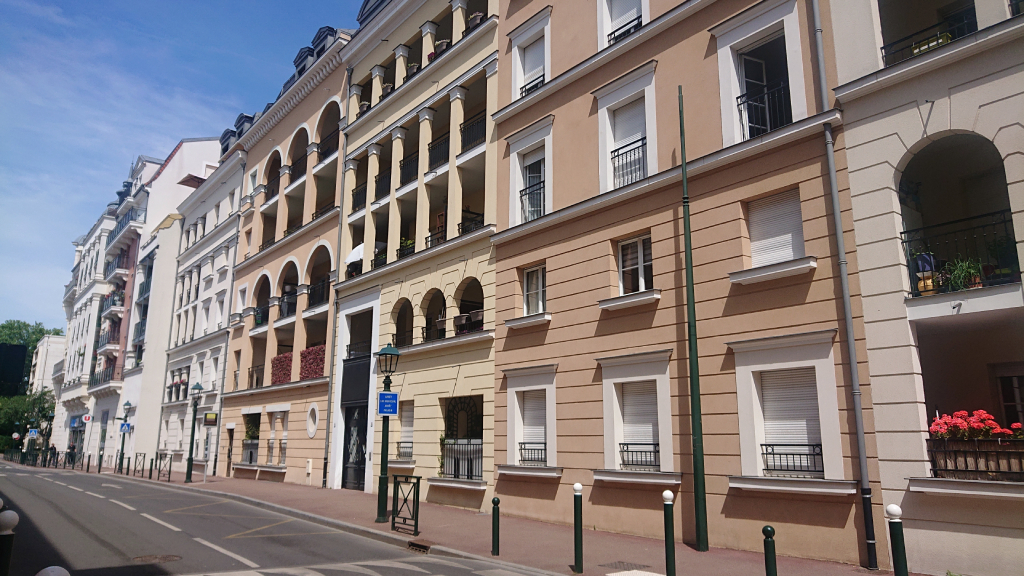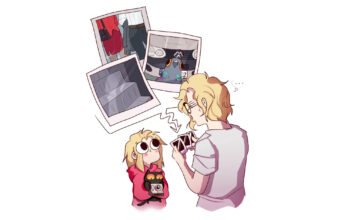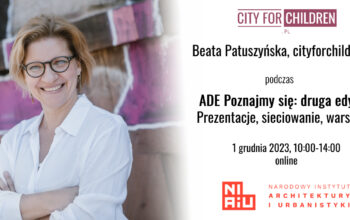The town with enamel eyes
When my children heard I would speak on a conference in Paris, they immediately asked me if I was going to visit Disneyland. I said ‘no’. But now, upon my return home to Warsaw, when I sat down to wrap up events of the week of IMCL conference in France, I realised that I actually had visited it.
Le Plessis-Robinson
The conference location was Le Plessis-Robinson, a town near Paris, which is considered to be the most significant project of New Urbanism in France. I had a chance to listen to Jacques Perrin, the town’s mayor, very proud of his town and work, and Marc and Nada Breitman – the architects who were behind the project, as well as planners, architects and placemakers, who visited the place for the conference. But most importantly I had a chance to experience the town by walking its streets.
During his presentation Marc Breitman, a lover of classical style in architecture, explained how important it was for them as architects to precisely recreate details and do it in accordance with the established rules of classical style. There can be ‘nothing worse than making a spelling mistake in a beautiful love letter’, he said. ‘It ruins everything’. And so, the Breitmans designed Le Plessis-Robinson.

It is a 30 years old ‘old- town’, built from scratch, on the site where they decided to take down old fabric superblocks that were located there before. But just like Coppelia, in a French ballet of my childhood, the result was a beautiful mechanical doll, but with no soul.
As someone who has lived my whole life in Warsaw, where the old town and Royal Castle had been totally demolished during WWII and rebuilt later, maybe I should be used to ‘new’ old towns? But this French ‘old’ town misses out on the heroism and bravery that can be sensed in the Warsaw reconstruction. Le Plessis-Robinson is, like the love letter quoted in Breitmans’ presentation, ‘a flawless piece’, but one where the real feeling has been lost in the search for beautiful words and perfection.
Pragmaphilia …
Le Plessis-Robinson is a pre-designed experience, a product. This is how I see it – it is a scenography, not a place with spirit where you sense people’s energy. Being there I couldn’t stop thinking of a computer-generated reality. I had an image of a lab, with people in wired helmets sitting in front of screens and watching different images, to find out, statistically, which images, colours or shapes they perceive pleasant. On that basis it’s a computer that generates a product, later called Le Plessis-Robinson.
In order to win loyalty and trust, a product needs a clear story, explaining to customers what to think. Le Plessis-Robinson has this. I heard it twice during the 3-day conference, and later, I found it again on the internet: ‘before the place was redeveloped, for years, it had been run by communists’. Setting the story in such a context, gives it one-sided ethical and political dimension and immediately programs its ‘customers’ that the new product must be better than the old one.
Still, I have to be fair. Statistics, which I found show that the product is successful. After redevelopment, the place quotes 3 times lower unemployment, 150% increase in new business, with property values reaching those comparable to Paris: it is successfully attracting investment.
Being a product, no wonder the place was recycled in the same way that products are. In that process the community, which is the natural owner of the place, lost its history and its ownership. During the panel discussions related to changes in Le Plessis-Robinson one of architects emphasised the social aspects of it – quoting that he was at the meetings where people found out that the places where they had got married or had been born would be demolished in the process.
… and topophilia
Working with children and advocating that they are equal owners of urban space, I am sensitive to expressions of unfair exercising of power, since it deprives various groups of the ownership, which is manifested in their right to decide about the place where they live. During his conference presentation George Ferguson, a former mayor of Bristol and architect, asked the question, what makes a good city? Of course, having the experience of transforming Bristol together with its residents, he immediately answered it: ‘giving a rope to people, so they can create it themselves’.

It reminds me of a story of a shelf that my son and I made. First, on the fields surrounding my summer house, I found a beaver’s scull with beautiful orange teeth. We wanted to display it in the house and so we went to explore the house and garage for materials. In the end my son designed a shelf made from cardboard packaging from an Ikea chair, and silver tape. Of course, I could have told him that I did not approve of his self-made cardboard shelf in my nice house. But instead, we made it together and it’s part of our house now, making it even more lovable. Plus, it fits very nicely with a cardboard frame of the triptych he painted when he was 3 years old, and it makes us all feel it’s a real home.
Sitting in my country house now, whilst writing this, and looking at this shelf, I can say with confidence that unlike Mr. Breitman I do not believe that a perfect love letter must be flawless. Children, who take advantage of every gap in tedious perfection to play and enjoy themselves taught me that perfect world is made of imperfections and love, that hides in them.




